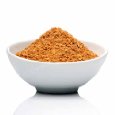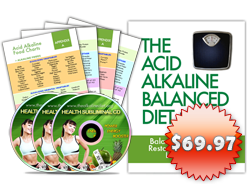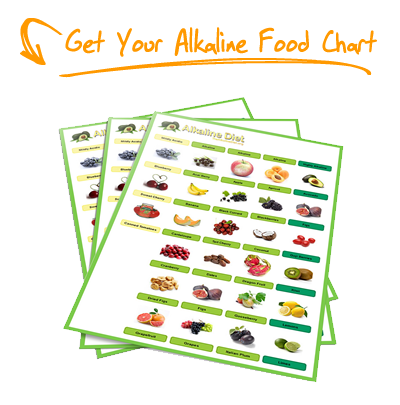Coconut Sugar – Is It Really Healthy?
Posted on 07. Jul, 2011 by Emma Deangela in Alkaline Foods, Blog
 Staying healthy and looking good is one way of living life to the fullest. A quick review on sugars and how they function in the body is a good way to evaluate if you are in fact staying healthy and not just looking good.
Staying healthy and looking good is one way of living life to the fullest. A quick review on sugars and how they function in the body is a good way to evaluate if you are in fact staying healthy and not just looking good.
About Sugars
There is one basic function of sugar in the human body: to provide energy. Sugars are mostly derived from carbohydrates. These carbohydrates are then converted into glucose. This glucose will further be split into smaller compounds before it can serve as energy for our body. Muscular system and central nervous system need glucose in order to function properly.
There are two types of carbohydrates: complex and simple. Fruit sugar (fructose), table sugar (sucrose), milk sugar (lactose) and several other sugars fall into the category of “simple sugar”. Fiber and starches fall into the “complex sugar” category. Vegetables, peas, oatmeal, beans, rice and bread are just some of the example of complex sugar sources. They take longer time to be digested and the body needs more time to convert them to glucose and be released in the blood.
Some Sugars “Are More” Equal Than Others
Coconut sugar is far better than other sugar. The calorie content in coconut sugar is almost the same to that of regular table sugar. On a scale of 0-100, the Glycemic Index (GI) index of coconut sugar is 35, which is very low. The GI is simply an index on how fast a certain sugar (or food for that matter) raises glucose level in the blood within 2-3 hours within consumption. Glucose, when used as a reference point, has a GI of 140 (which is pretty high). Because of its taste being similar to that of brown sugar and nutrients, coconut sugar is recommended in baking, cooking, tea and coffee in 1:1 ratio. Changing to low GI sugar that can slowly ooze glucose level into your bloodstream can give you a balanced energy.
There are some other benefits of incorporating low GI sugar in the diet. These are the following:
- People lose much easily and can manage weight.
- The sensitivity of the body to insulin is increased.
- Management of diabetes is improved.
- The threat of heart disease is reduced.
- Cholesterol levels in the blood is improved.
- Hunger pangs is reduced and you’ll feel fuller longer.
- Physical endurance is prolonged.
- Carbohydrate stores after exercise is re-fueled easily.
The Notable Nutrients in Coconut Sugar
The micronutrients in coconut sugar are notably higher probably because it is less processed than white or brown sugar. Some of these vitamins and minerals are worth looking into…
Nutrients. Potassium, zinc, iron, and magnesium are found to be high in coconut sugar. Zinc is ten times higher in coconut sugar compared to that in brown sugar. The magnesium content is four times higher while iron is twice higher. In addition to this, it also has traces of vitamins B6, B3, B2, and B1.
Amino Acids. There are 16 types of amino acid found in coconut sugar, the highest of which is Glutamine. Glutamine is useful in treating serious illnesses, trauma, injury, burns, wound-healing for post-operative patients and for countering the side effects of cancer treatment such as chemotherapy.
Inositol. Inositol is the most abundant vitamin in coconut sugar. Inositol can reduce the need for pain medication for patients. Edema, resulting from the scald burn treatment, is also reduced. Symptoms of diabetic neuropathy are found to be reduced when inositol is administered. Inositol, because of its positive influence on the central nervous system and in healthy cell production, is further recommended for treating anxiety, neuropathic disorders, and depression.
How Coconut Sugar is Made
Coconut sugar is mainly produced in the Pacific region where coconut trees are abundant. The coconut sugar is not extracted from the nut but from the coconut toddy or the sap. The traditional extraction of the toddy is an art and is passed down from generation to generation of coconut toddy extractors. The unopened spadix is sliced thinly and is left to ooze in the traditional container made of bamboo. The cleanliness of the container and the harvest time plays a crucial role to be able to extract the sugar. Harvest must be done every 4 hours. The toddy is then boiled ( it is also important that the wok has never been used other than coconut-sugar making) and is stirred constantly until all the water content in the sap evaporates and sugar granules are formed (coconut honey is produced when the sap fails to produce granules).
Coconut sugar has a subtle taste of caramel and is sweet like that of a brown sugar. However, since coconut sugar is not highly processed, the flavor, sweetness, and color can differ depending on different factors such as coconut species used, season or time it was harvested, the place where it was harvested, and even the way the “sap” or “toddy” was reduced.





Sandra Van Asch
19. Jan, 2012
Is coconut oil alkaline or acidic? I am using it to lose weight and reduce hunger between meals. I have Interstitisual Cycstitis which I understand is aided by an
alkaline diet. Is that true?